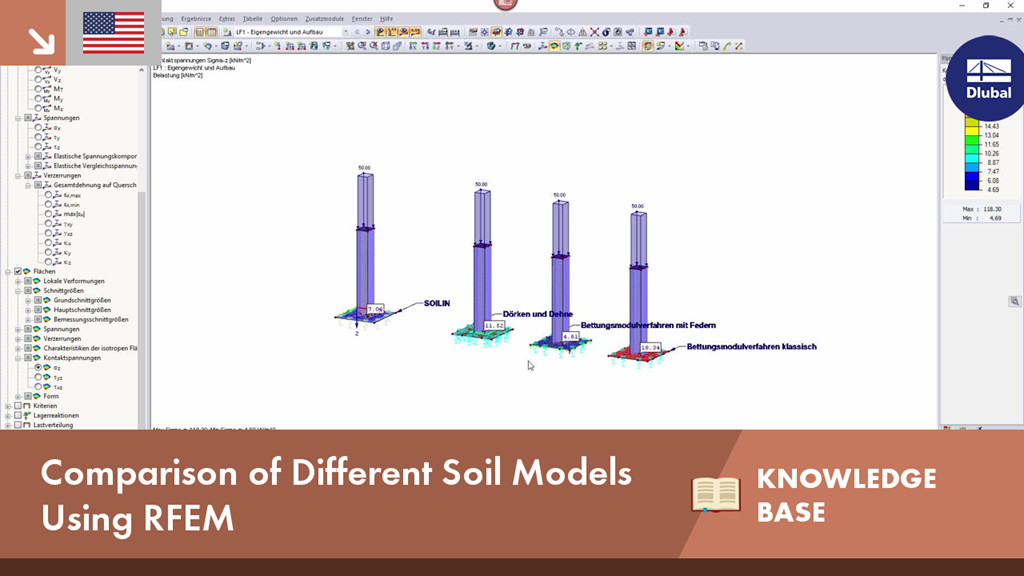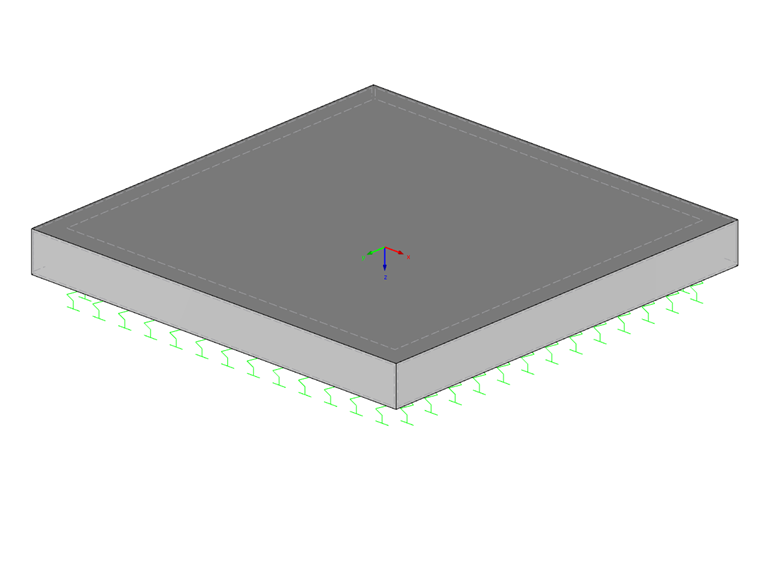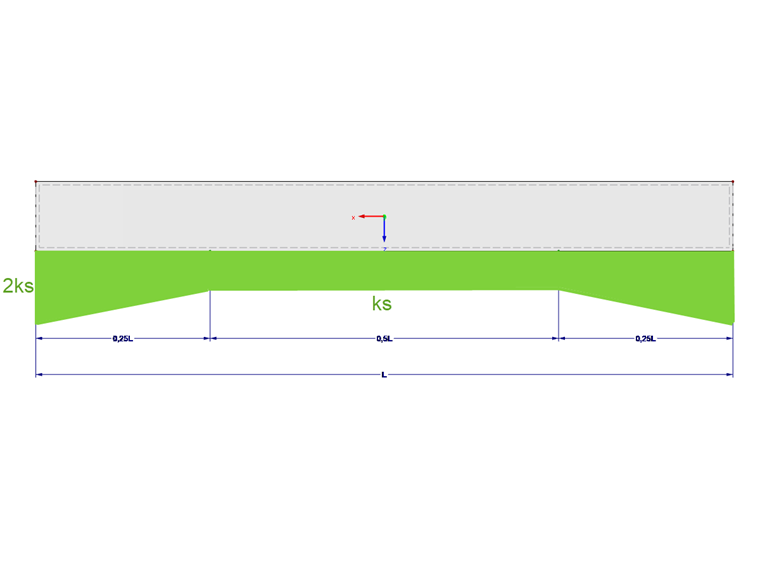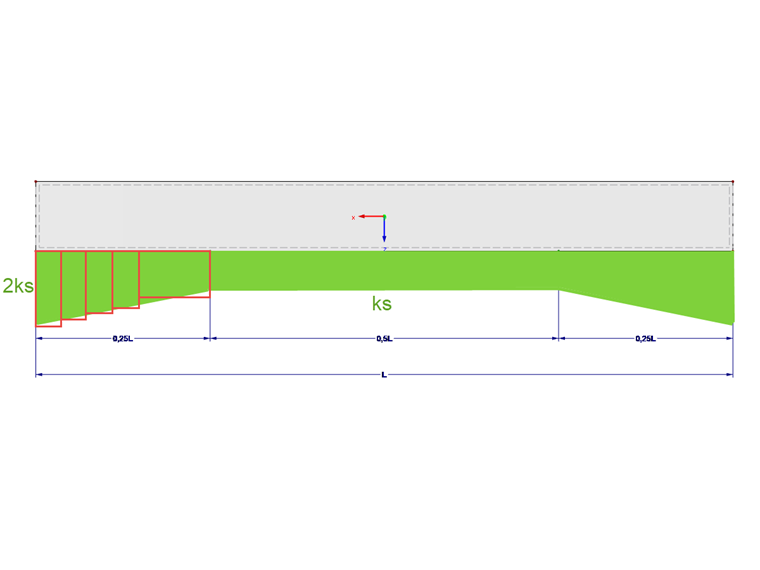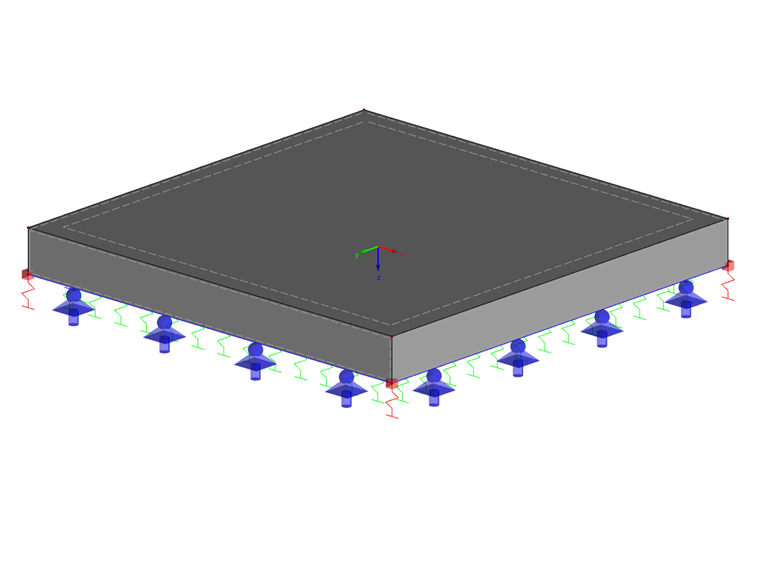Topic:
Knowledge Base | Comparison of Different Soil Models Using RFEM
Annotation:
A foundation is usually created in RFEM using the subgrade reaction modulus method. The reason for this is the relatively easy and straightforward manageability. Also, no iterative calculations are necessary and the computing time is relatively short. The approach using the subgrade reaction modulus method means that, for example, a foundation plate is elastically supported over its surface.
Description:
This support is represented by vertical springs, which are applied with constant spring stiffness and independent of each other. Therefore, it is not possible to calculate any subsidence basin close to reality. This type of bedding is also known as Winkler bedding or halfspace. In order to use this method, the subgrade reaction modulus k-s (program-internal C1z) is required, which is calculated using the soil pressure σ-0 and the corresponding settlement s.
The disadvantage of the subgrade reaction modulus method is, among other things, that the soil modeling is insufficient and the adjacent ground areas cannot be considered. Since the load on the subsoil only causes a deformation directly under the load itself (spring cushion), the subsidence basin does not correspond to reality. Shear stiffness of the soil is also not taken into account.
Subgrade Reaction Modulus Method with Variable Subgrade Reaction Modulus
The deficiencies of the classic subgrade reaction modulus method can be mitigated by defining a variable subgrade reaction modulus. Dörken & Dehne [2] recommend a subgrade reaction modulus that increases to twice the value towards the edge on a narrow strip. This should simulate the soil effects outside the foundation edge. The resulting settlements are significantly improved by this method.
You can enter a variable subgrade reaction in RFEM by means of a stepped boundary area, for example. However, this modeling approach sacrifices some of the advantages of the classic subgrade reaction modulus method, such as the clear layout and fast program input.
Consideration of Adjacent Ground Areas Using Additional Springs
This model is based on the "Effective Soil Model" method by Kolář & Němec [3]. In contrast to the method with variable subgrade reaction modulus, the shear resistance is also taken into account here in addition to the subgrade reaction modulus. The adjacent ground areas are taken into account using line springs and single springs on the edges.
The springs used for the example result as follows from the vertical subgrade reaction parameter of 54,500 kN/m³ used as a basis for the calculation:
s-0 corresponds to the range of the subsidence basin at which the settlements fall below 1% of the foundation edge values.
c-v,xz and c-v,yz are the shear springs for the surface elastic foundation.
0.1 ∙ c-1
